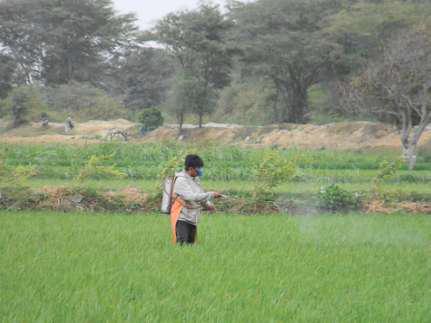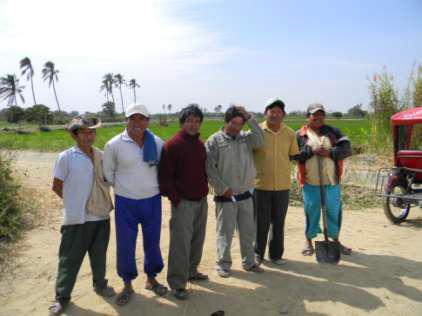Florencia Andrea Trama
Other projects
20 Jul 2015
Pesticides Bioaccumulation on Aquatic Biodiversity in Rice Fields and Mangroves of Piura, Peru
The project aims to asses pesticides effects on water quality, macroinvertebrate communities, natural wetlands and farmers. Analizing the relationship between pesticides and water quality.

Rice fields are temporary wetlands that have alternate periods of flooding and drought in four-month cycles. These spatially heterogeneous dynamics permit the establishment of a cyclically diverse aquatic fauna. Macroinvertebrates are one of the most abundant group of individuals. However, as temporary monocultures, rice fields also offer a very abundant source of food for pests (e.g., herbivores or pathogens). In rice fields of Piura (north of Peru), farmers use pesticides to optimize the yields of their rice fields. Many of these chemicals are highly toxic or are used in large and toxic quantities. In addition, drainage water is discharged into a channel that feeds into the San Pedro de Vice Mangroves, located at eight kilometres from the rice fields, and the water quality may be affected by pesticide residues. Furthermore, pesticides affect the health of farmers. Men, women, and children work on the crop and during the pesticide application they do not wear protective clothing. In some cases, farmers wash their application equipment in channels where children usually swim.

Benthic macroinvertebrates can be used as bioindicators of water quality, and they can be associated to the treatment. In Peru, no studies have been done concerning to the use of pesticides on flooded rice fields and their effect on wildlife and water quality. My project will assess the effect of pesticides used in rice fields on benthic macroinvertebrate communities and water quality in the lower Piura River and associated natural wetlands. I will concentrate my study on benthic macroinvertebrates, the most abundant group that are also a very important source of food for fish, waterbirds and other associated wildlife. I will assess benthic macroinvertebrates as bioindicators of water quality and I will test water samples looking for pesticide’s residues at the entrance of the irrigation channel, at the main drainage of the rice project and right before the mangrove ecosystem. I will carry out interviews and do walks near the crops to know what products farmers are applying and detect pesticides containers.